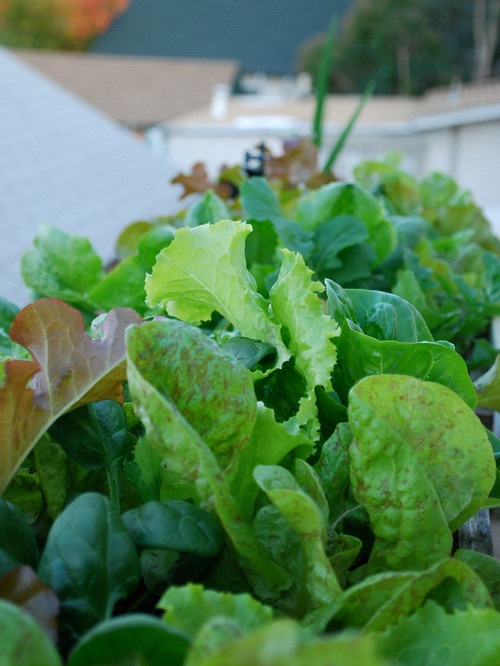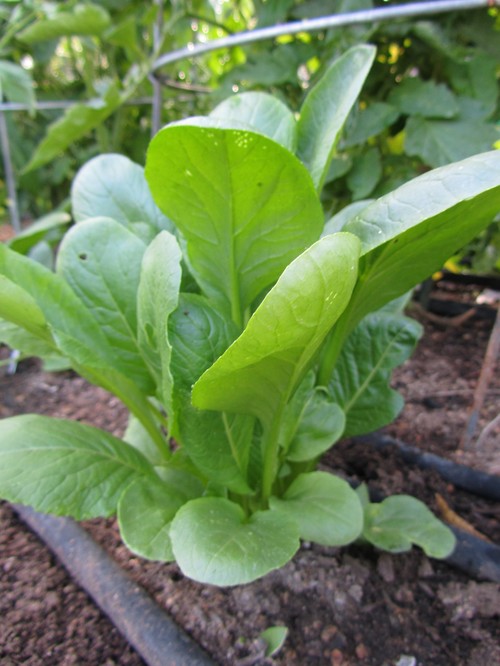
AlexRaths/Getty Images
Growing your own food is satisfying on many levels: The act of tending plants is calming, hauling around potting soil and water makes for good exercise, and, of course, eating vegetables you grow yourself is immensely rewarding.
And as we continue to hunker down at home due to the coronavirus pandemic, having a source of fresh vegetables close at hand also saves you a few trips to the store, reducing the exposure risk for you and your family.
It’s no wonder there’s renewed appreciation for victory gardens, which were popular during wartime. (In a related note, interest in animal husbandry is on the rise—mail-order baby chickens are suddenly scarce!)
Spring is the season for turning up the earth and planting a vegetable garden—but you don’t need an actual patch of lawn to do this. Many vegetables can grow nicely (and quickly) from seed, in containers or even on a sunny windowsill.
Depending on where you live, it might be warm enough to pop seeds in the soil right now. But if you’re in a cooler climate, you can get them started indoors and then move them to larger pots outside, says Susan Brandt, a master gardener at Blooming Secrets.
To help get your garden going—and because no one wants to wait too long for the good part (the harvest!)—here are five fast-growing, high-yield veggies to get your kitchen garden started.
1. Lettuce
Photo by Steve Masley Consulting and Design
These leafy greens grow quickly and offer a bountiful yield, notes Oscar Ortega, maintenance care manager at FormLA Landscaping, who recommends non-GMO seeds for planting.
“Lettuce keeps on giving—you don’t have to harvest the entire bunch at one time. So just pick the leaves you like, and let it regrow,” he says.
Lettuce doesn’t take up much space, making it ideal for container gardens.
“It’s a cool-weather vegetable that should be planted now, in early spring, but you can also grow it in the late summer and early fall,” notes Brandt.
Many lettuce varieties mature in about 45 days or so, and succession planting ensures a crop that keeps flourishing.
“If you plant more seeds every two weeks for a six- to eight-week period, you’ll get two to three crops from one package of seeds,” Brandt adds.
2. Radishes
New gardeners love these ruby-red orbs because they’re the fastest-growing veggie out there, and they also fare well in chilly spring weather.
“The red varieties are the best known ones, but radishes also come in other colors, including white, pink, and purple, and they can be picked just 25 days after planting,” says Brandt.
3. Carrots
Don’t look askance at this rabbit food—small carrots are quick to sprout, which means you can get to crunching on them in as little as 50 days.
“Maximize your efforts and the space you have in your pots by growing radishes and carrots together, and this way, you can pick radishes long before you need to thin the carrot crop, giving you the satisfaction of a harvest while you wait for the baby carrots to mature,” says Brandt.
4. Spinach
Photo by Jackie and the Beanstalk
This nutritious dark-green vegetable is your golden ticket to container gardening success. Just as with lettuce, you can plant spinach seeds in succession so you’ll be assured of a consistent crop all spring.
“Spinach is usually ready to pick in as little as three to six weeks after planting,” Brandt says.
5. Bell peppers
Photo by Steve Masley Consulting and Design
Peppers take the longest to mature in this group of five, at about 70 days, but they’re a fun one to try since the timing of your harvest can change what you get to eat, says Ortega.
“For example, a green pepper will turn into a red one if it’s left on the vine, and if you let jalapeños keep growing, they’ll also turn red and become sweeter and less hot,” he says.
Grow from seeds—or even kitchen scraps
These five vegetables are easy to grow from seeds, but if you want to speed things along, you can pick up starter plants from a nursery or farmers market. And if you want to go green in this endeavor, you can get veggie starts from your compost pile.
“Put the bottom of lettuce leaves or carrot or radish tops in a glass with some water, and place it in a spot that gets good sunlight,” says Brandt.
Mist the leaves with water a couple of times during the week, and after three or four days, check to see if roots are starting to grow.
“When you see the roots, you can transplant them into soil in a container,” she adds.
Salad from scraps? That’s one victory we can get behind.
The post 5 Fast-Growing Vegetables To Plant in Your Victory Garden This Spring appeared first on Real Estate News & Insights | realtor.com®.





No comments:
Post a Comment